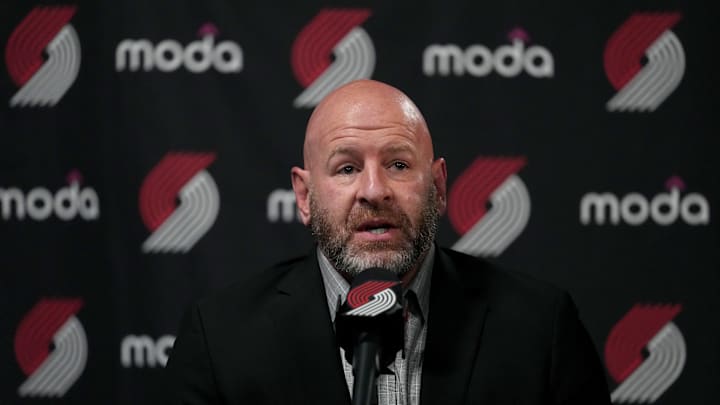The Portland Trail Blazers have made a plethora of moves this offseason, all of them working towards the goal of competing sooner rather than later. General Manager Joe Cronin has really leaned into a “defense-first” roster construction; this ethos was echoed in his season-concluding press conference, where he expressed the importance of that aspect.
Shortly thereafter, Cronin pulled the trigger on an Anfernee Simons trade that netted Jrue Holiday in return. Acquiring a plus defender for a negative one fell in line with the stated goal, even if Holiday is a great deal older than Simons. While this trade exponentially shored up Portland’s defensive profile, with it came another problem: a marked dearth of offensive capability.
Simons was perhaps the Blazers’ greatest bucket-getter, an above-average three-point shooter on a significant volume. Last season, the Blazers shot below the league average as a team, but removing Simons from the equation knocks down the team’s three-point percentage by almost a whole point. And while nobody can know how the Blazers’ offense will look with all the minor additions and subtractions made in the offseason, my calculations led me to a hair over 34% based on last season’s numbers—almost two percentage points lower than the league average.
While the subtraction of Simons corrals the Blazers' game plan into a more pass-heavy, transition-first offense, the Blazers need a guy who can get his own shot, offer a little on-ball creation, and light it up from three in bench minutes—once the Blazers starters sit, shotmaking suffers. In essence, the Blazers need Anfernee Simons back, but they need him to accept a microwave scorer’s role.
The Blazers' offense needs Malik Monk
Currently playing for the Sacramento Kings, Monk has typically thrived in a bench role. Just two short years ago, Monk finished second in Sixth Man of the Year voting after having finished fifth in the previous season. Last year, Monk was ineligible after starting 45 out of 65 games played. While his per-game stats increased in that season, they were down across the board on a per-minute basis.
The ‘24-’25 season was a bit of an aberration for Monk; his shooting percentages dipped as he was unaccustomed to going up against the first units of rival teams. Monk, a 40% three-point shooter just four years ago, slumped to just 32 percent beyond the arc. In Sacramento, Monk was perhaps asked to do just a little too much; his best statistical seasons all came before the move to Sacramento. In playing for the Kings, Monk was asked to do far more playmaking than in his prior seasons, seeing his assists and turnovers balloon to their highest levels. He would not be asked to perform this way in Portland.
Now that Anfernee Simons is gone, Shaedon Sharpe and Scoot Henderson will presumably run the backcourt, while offense takes a back seat to defense in the second unit. Though Holiday is perfectly capable of putting the ball in the basket, the attack will be much more balanced with Holiday setting the table for Monk to eat. Sacramento famously tried to offload Monk [subscription required] this offseason with the hopes of signing Russell Westbrook. This never materialized, and the asking price for Monk may well have met its nadir as we gear up for the 2026 season.
Concurrent with Monk’s low demand, the Kings are currently playing Drew Eubanks at the backup five spot, while the Blazers face a glut at the same position. A package centered around Kris Murray and Robert Williams III for Monk seems like the obvious play here; all three could use a change in scenery, and the Kings’ entire team identity is raised an order of magnitude if Williams is serviceable.
